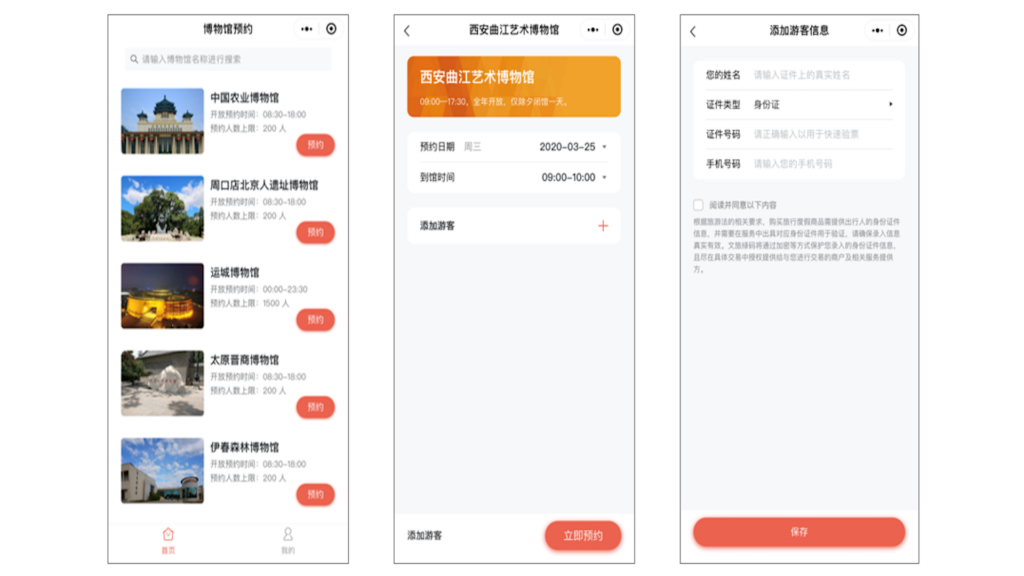This article originally appeared on Dragon Trail. visitors
As China cautiously navigates out of a coronavirus imposed lockdown, its domestic tourism industry is showing signs of recovery with museums and attractions across the country beginning to reopen.
Cultural destinations are understandably prioritizing the health and safety of visitors and extensive precautionary measures have been implemented including requiring visitors to wear face masks while onsite and adopting a QR code system through which visitors can pre-apply online. The digitization of ticketing allows museums to manage visitor flow and ensures contactless entry (no face-to-face or touch-screen purchases).
All participating institutions are listed on a single WeChat Mini Program, Culture and Tourism Green Code (文旅绿码), making it simple for visitors to plan and arrange cultural activities. Click here to learn more about the Mini Program (in Chinese).
While the reopening of museums and attractions remains a distant reality across much of the world, the tech-centred and hygienic measures currently being trialled in China are worth keeping in mind for the future.
Requiring Face Masks
Chinese museums require all visitors to wear face masks.
Will this work overseas? Highly unlikely. Although the widespread use of face masks can reduce the chance of transmission, they are still not commonly worn in western countries.
Limiting Visitors
Local Chinese cultural and tourism agencies are following regulations by limiting visitor numbers to 50 percent of total capacity during the immediate post-crisis period.
Will this work overseas? Yes, and it’s advisable. Limiting visitor numbers during the recovery phase is an actionable policy that will help maintain social distancing. It will likely be appreciated by visitors who have grown accustomed to social distancing during the crisis. Besides, who doesn’t enjoy a less crowded museum?
Required Health Declaration
In China, information about the health and movements of citizens is used to issue a personal QR code. Once “green”, people are allowed to move freely. In order to reserve an entry time at a museum, individuals must make a declaration of clean health, i.e. confirm they haven’t been to an affected area or in contact with an infected individual over the past 14 days.
Will this work overseas? Doubtful. It’s difficult to imagine requiring people to record their movements and personal information on an app. More realistic would be asking people to confirm their health status before booking a museum visit. Whether or not respondents will read the full declaration and answer truthfully, however, is another matter.
Online Ticket Booking

Visitors must book register through a centralized booking system. Image: WeChat
The museum QR code system currently being adopted in China asks individuals to give their health status, name, contact information, and national ID number, before selecting visit time. This ensures museums do not become crowded as visits can be distributed evenly.
Will this work overseas? Possibly. While giving out ID information is unlikely to go over well in Europe or the U.S., asking people to book online and then issuing a QR code for entry has potential. However, logistical specifics would need to be considered. For example, what happens to older visitors who may not have access to the internet or use apps? How will museums scan QR codes? While QR codes are widely used in China, they remain less utilized in Europe and the U.S. While online ticketing can be achieved, without a connecting QR code the benefits of a contactless system are lost.
Centralized Booking System
In China, participating museums are all listed in one WeChat Mini Program.
Will this work overseas? Highly dependent on the destination. Outside of China, another system would need to be used in lieu of WeChat — would a city or museum association organize a website or app for this purpose? Or could individual museums simply establish their own systems? Some cities may have the potential to organize a centralized system, but this can’t be expected everywhere.
Edited by Richard Whiddington



